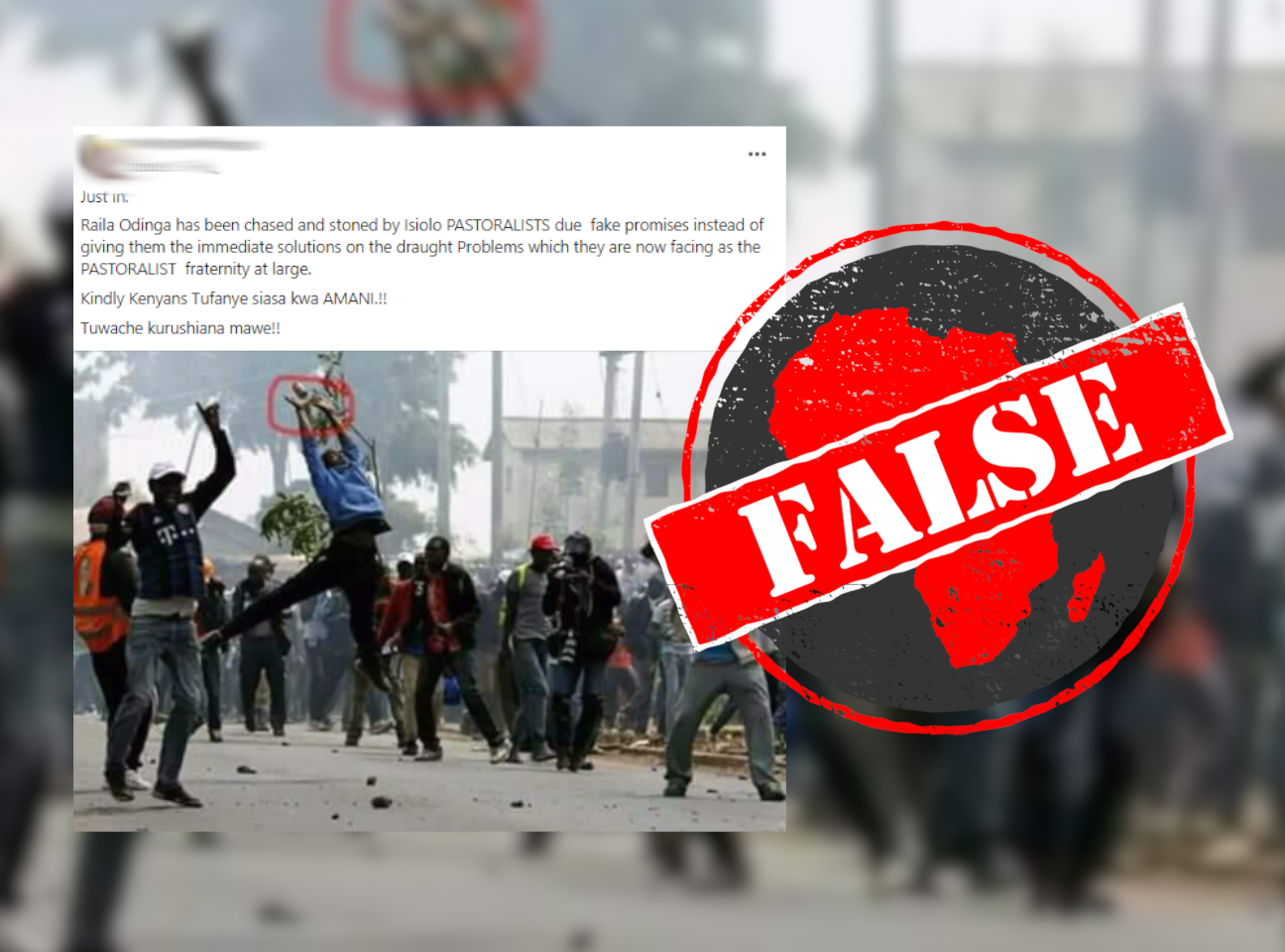Opposition leader Raila Odinga was in Isiolo county in central Kenya on 16 October 2021 to woo voters. He has his hat in the ring for president in the country’s August 2022 general election.
A day later, a post emerged on a Facebook page with over 13,000 followers, claiming Odinga had been “chased and stoned”. Shared with the post was a photo of a group of men jumping into the air on a debris-strewn road.
The post reads: “Just in. Raila Odinga has been chased and stoned by Isiolo PASTORALISTS due fake promises instead of giving them the immediate solutions on the draught Problems which they are now facing as the PASTORALIST fraternity at large. Kindly Kenyans Tufanye siasa kwa AMANI.!! Tuwache kurushiana mawe!!”
The last two sentences are in Kiswahili and translate to: “Kindly Kenyans, let's practice our politics in peace. Let’s stop throwing stones at one another.”
There were chaotic scenes reported at the rally, put down to local county politics, which forced the county governor to leave. But we could find no reports of Odinga being chased or pelted with stones.
Does the picture illustrate the chaos? We checked.

Photo from 2017
A Google reverse image search of the photo revealed that it was taken on 17 November 2017 by Reuters photographer Thomas Mukoya.
The photo was captioned: “Supporters of Kenyan opposition National Super Alliance (NASA) coalition clash with police officers in Nairobi, Kenya November 17, 2017.”
Odinga supporters thronged the streets to welcome him as he returned to Kenya from a 10-day overseas trip, which led to clashes with police. The photo is unrelated to the October 2021 Isiolo rally.
Republish our content for free
For publishers: what to do if your post is rated false
A fact-checker has rated your Facebook or Instagram post as “false”, “altered”, “partly false” or “missing context”. This could have serious consequences. What do you do?
Click on our guide for the steps you should follow.
Publishers guideAfrica Check teams up with Facebook
Africa Check is a partner in Meta's third-party fact-checking programme to help stop the spread of false information on social media.
The content we rate as “false” will be downgraded on Facebook and Instagram. This means fewer people will see it.
You can also help identify false information on Facebook. This guide explains how.


Add new comment